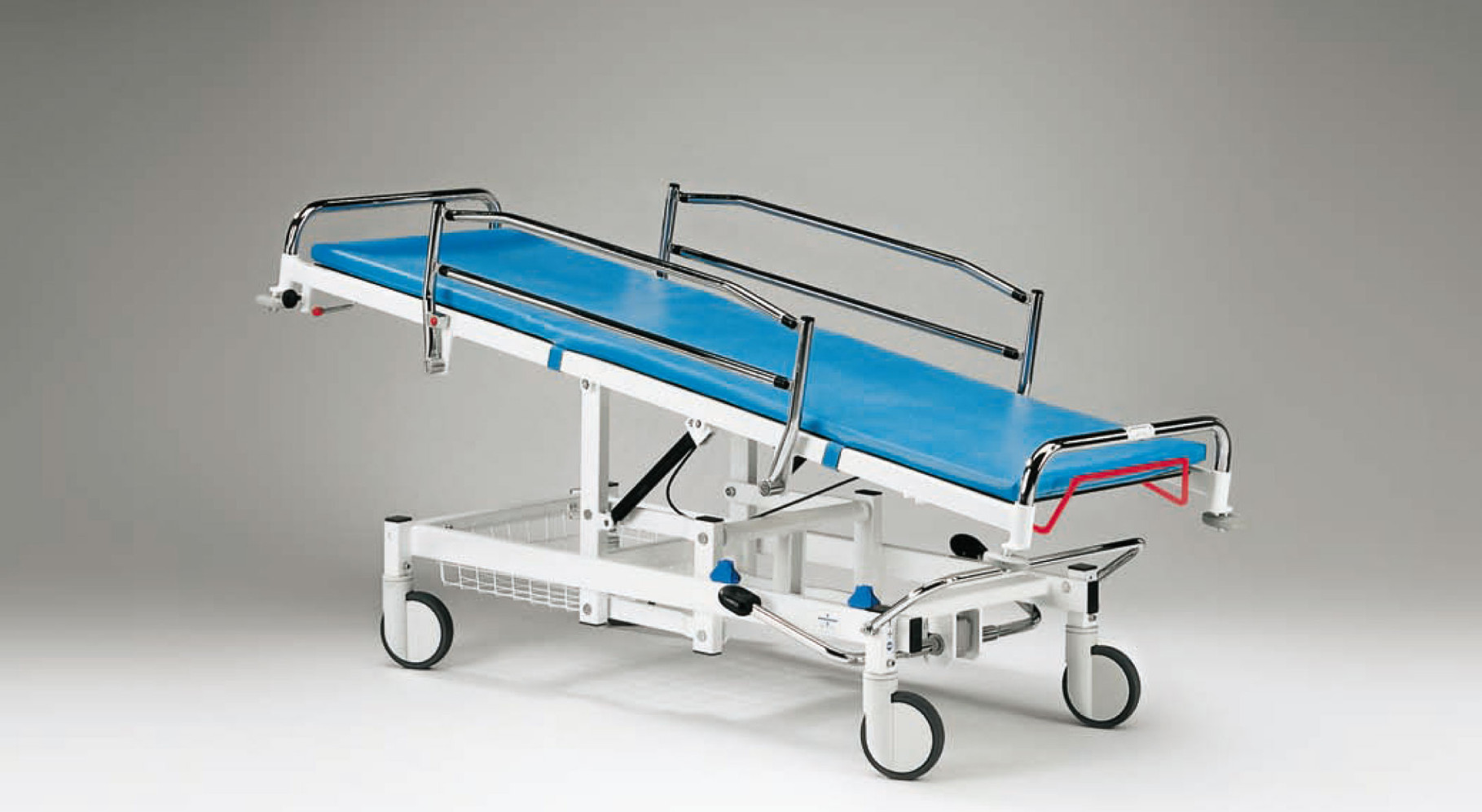Rating of the best self-priming pumps for industrial needs for 2022

Some types of self-priming pumps can be used not only in household chores, but also used on a large scale for industrial needs. Such devices are capable of pumping large volumes of special liquids, which may vary in composition and consistency. Similar industrial pumps are divided into peristaltic (they are also hose), screw and gear.
Content
Hose pumps
Hose or peristaltic pumps are special devices that assume the principle of volumetric action, which consists in pumping liquids by forcing them through a pipeline, which is a flowing part of pumping equipment. The design of these devices includes an elastic hose and several rollers, due to the rotation of which a pressing effect is exerted on the liquid substance against the track, as a result of which the flow area narrows. Thanks to this technology, the liquid passes through the hose at a high delivery rate.
The main advantages of such devices are:
- Increased tightness;
- The metal parts of the device are absolutely not in contact with the pumped substance (an additional level of protection);
- The equipment is quite unpretentious in repair and maintenance;
- It is possible to dispense abrasive/aggressive/viscous liquids;
- Have a self-priming function;
- During the work observe the reduced noise mode.
These properties suggest a rather wide scope of use of the equipment in question. It has been successfully used in the pharmaceutical and chemical industry, the food industry, in laboratory and medical research, agriculture, construction and most other industries.
The devices have proven themselves in solving issues of water treatment and wastewater treatment.At the same time, during the performance of these works, it is possible to dose chemical reagents for water treatment, for example, activated carbon, lime, iron chloride, sodium hypochlorite, etc. They can also ensure the movement of sludge and the supply of products to the filter press.
To do this, they have significant advantages:
- Lime and other substances that have abrasive properties can quickly wear out pumps of other types (for example, screw and diaphragm pumps);
- Most polymers are hypersensitive to various shifts, and hose equipment allows pumping without destroying their structure;
- Sludges can contain most impurities (coarse), which may well cause damage to the internal structural elements of other types of pumping equipment.
The chemical industry can be attributed to another large-scale area of use of peristaltic pumps. There, such pumps allow you to pump alkalis and acids, solutions of chalk and aluminum alum, and also use them to drain wastewater, including large foreign particles. There is also a separate category of hose pumps that can pump radioactive liquids - they are used at nuclear power plants. But best of all, peristaltic equipment has proven itself in the general construction industry, where it is used to supply mixtures, viscous paints, and various adhesives. And instead of the procedure for cleaning the pump pipeline from sticky compounds after carrying out the above operations, you can easily carry out the usual pumping of water with a small degree of pollution.
Screw pumps
They are also called eccentric screw pumps. They are bulk equipment.
The main areas of application are:
- Food industry (pumping sugar syrup);
- Oil industry (pumping out drainage water from wells);
- General construction works (pumping of high-viscosity liquids containing solid foreign inclusions).
- The implementation of the above types of work became possible due to the use of the principle of fluid movement in the screw pump due to the injection of high pressure areas.
Screw pump: device and design
The heart of such equipment is a helical metal rotor that rotates in an elastomer stator.
The screw pump consists of:
- rotor;
- stator;
- Suction pipe;
- sealed shaft;
- Cardan joints.
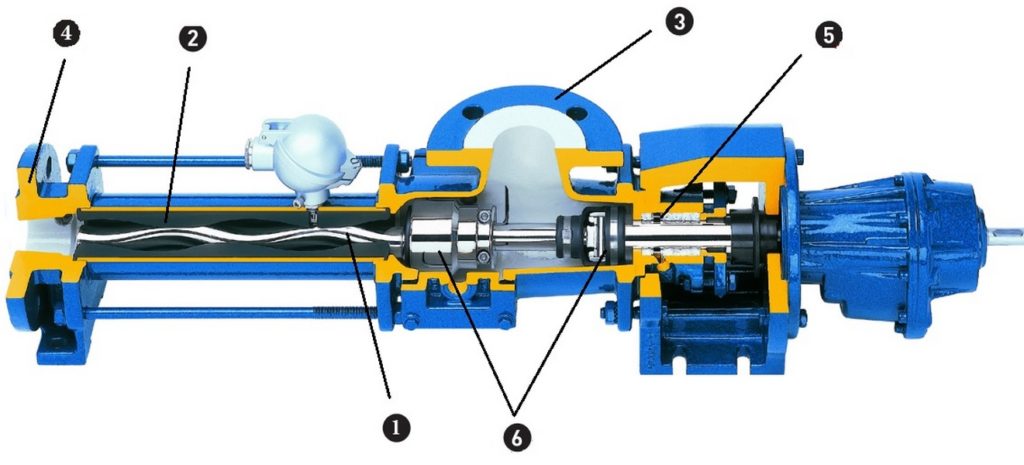
The action of such a pump is as follows: the rotor, tightly fitting to the elastomer stator, forms a double chain of completely sealed compartments. During the rotation of the rotor, the distilled liquid fills these compartments and gradually passes from the suction pipe to the discharge pipe, while neither the shape nor the volume of the liquid in the compartment changes.
Most models of screw pumping equipment have a pumping capacity from 100 cubic meters / hour to 500 cubic meters / hour. Depending on the working volumes, the pressure can be maintained from 6.1 to 49 atmospheres. The number of steps can vary from 1 to 8 pieces. The viscosity of the pumped liquid can be from 2 to 3 million cps. The maximum size of foreign inclusions in pumped substances should not exceed 150 mm.
The advantages of screw pumps are:
- Possibilities of pumping high viscosity liquids;
- Ensuring work by forcing areas of high pressure;
- Possibilities of constant supply of fluid for pumping;
- Self-priming;
- A wide range of substances that can be pumped;
- Working with liquids with large foreign inclusions.
The disadvantages of screw pumps include:
- Excessively large dimensions (the more steps such equipment has, the longer its flow part becomes);
- It is extremely difficult to maintain (it is unlikely that it will be possible to replace a failed element on its own, not only special knowledge will be needed, but also special equipment);
- Very high price for spare parts;
- Due to the fact that the stator and rotor are in constant contact, this circumstance leads to their rapid wear;
- Work on a "dry" run is strictly prohibited (the equipment instantly fails).
However, it is worth noting that the scope of application for screw pumps is quite wide. They can be used for pumping multiphase liquids, pumping crude (heavy) oil, pumping especially viscous substances (tar, tar, bitumen, rubber). Low-stage models can be used in the food industry, and for construction work, they can pump glue and paints and varnishes.
Gear pumps
This is the name given to gear pumps that operate on the principle of positive displacement. They move a liquid substance repeatedly blocking its fixed volume by means of teeth-blockers (gear wheels), while the movement is carried out according to the principle of operation of a cyclic pump. This process provides a pulse-free flow that is directly proportional to the speed at which the gear is turning.
Operating principle
The basis of operation of gear pumping equipment is that a rotating element creates a liquid seal in the casing.The substance that the pump has drawn in is instantly contained in the gear compartments, which transfer it to the drain. Gear pumps can have both internal and external gearing.
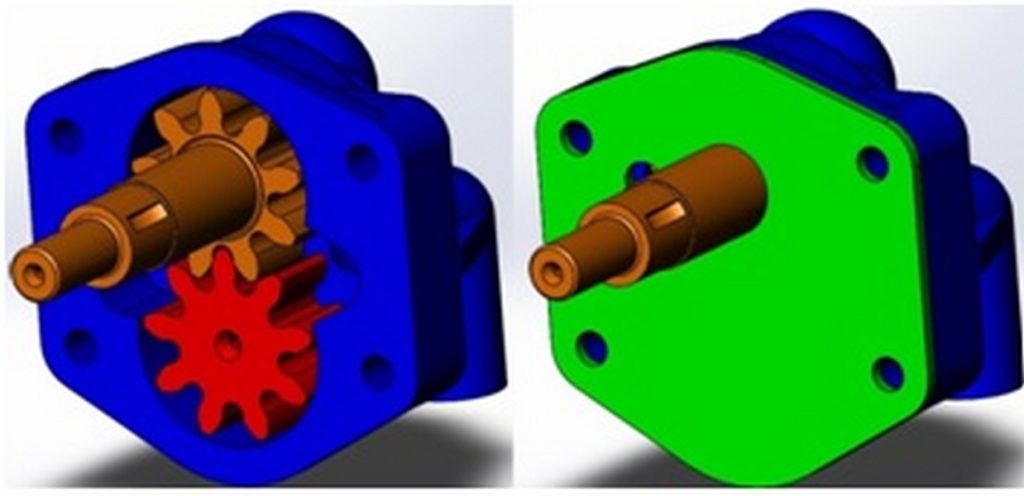
- External gear
Such a pump consists of two equivalent gears that block each other, while being simultaneously supported by two different shafts. The gears are interconnected and one drives the other. Liquid flows into the compartments and is captured by the teeth, after which it is distilled from the suction pipe to the drain around the casing. At the moment when the teeth of the wheels are in contact on the discharge side, then this leads to a decrease in volume, and the liquid substance begins to be displaced due to the resulting pressure. Under no circumstances can the liquid return in the opposite direction, because the teeth have already touched and are in a locked position. The close tolerances between housing and gears allow this type of equipment to increase suction at the inlet and prevent any leakage on the discharge side.
On external gearing devices, both herringbone and cylindrical gears can be used.

- Internal gear
The principle of operation of such pumping is a bit similar to that described above, with the only difference being that it uses gears of different levels. The rotor is a large gear, inside of which a small one is inserted. Moreover, the last teeth go beyond the first. During operation, the teeth of both wheels interlock at one point. And the crescent-shaped partition fills the void created by the tension roller. The liquid at this time flows into the compartments and is locked by the gear teeth. Thus, the liquid moves from the inlet to the drain of the casing.Internal gear models use only spur gears.

Applications of gear pumping equipment
Such devices are well suited for pumping paints and varnishes, various oils, resins, liquids of increased (but not high!) Viscosity. The pressure on the operation of these devices is slightly affected, so they are ideal for situations where the supply of liquid substances is not performed on a regular basis.
Benefits of gear pumps
Unlike piston, they do not create areas of high pressure, but have a high throughput. In approximately the same way they differ from centrifugal pumps, which do not tolerate viscous substances at all. If we give the closest example of a gear pump, then we can imagine an oil pump used in automobiles.
Industrial pumps of this type are able to withstand extremely high pressures with high-speed flow - up to 200 bar. All this is made possible by a very rigid support on which the shaft is mounted.
Due to the fact that the speed of rotation of both gears is directly proportional to productivity, these devices are perfect for mixing / dosing various liquid substances.
The gears themselves are made either from stainless steel or from cast iron, which allows them to work with aggressive liquids (while we must not forget that the pipeline material must also have similar properties). Gear pumps are often used in heavy equipment to ensure the operation of hydraulic mechanisms.
Rating of the best self-priming pumps for industrial needs for 2022
Hose pumps
3rd place: Mouvex BackMer Pump A10-AS10
This device is designed for pumping aggressive and abrasive liquids for the needs of the mining and chemical industries. It will also be indispensable for the needs of water treatment and drainage. Perfectly will be suitable as system of water purification of small reservoirs.
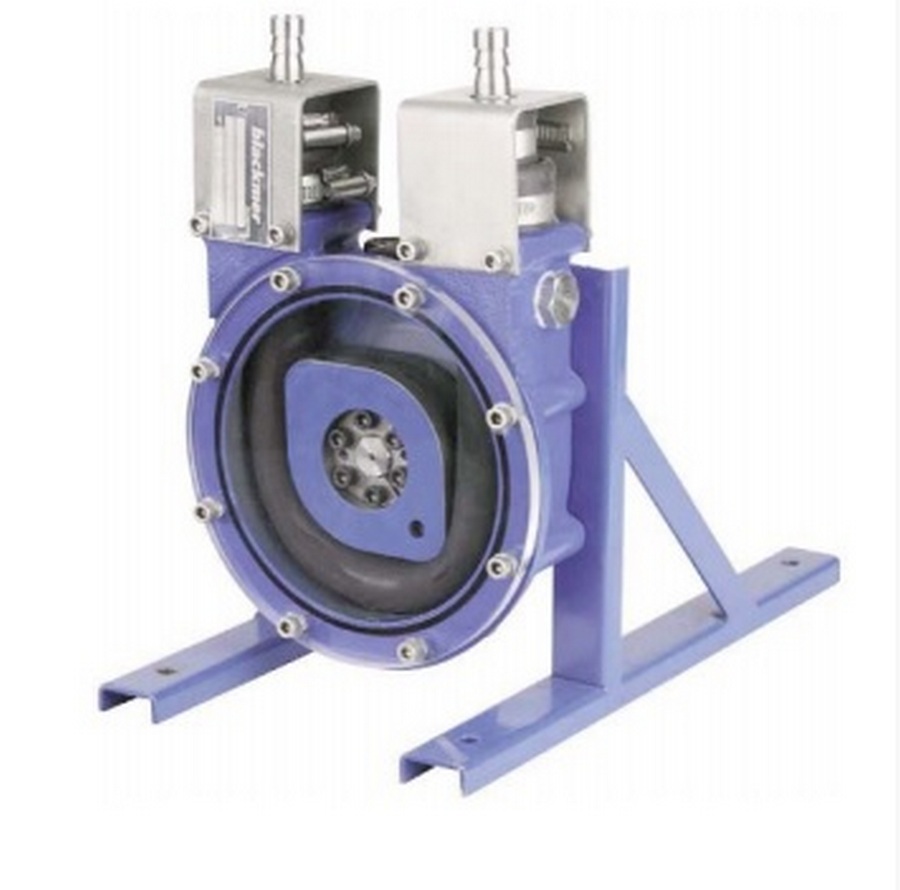
Specifications:
| Name | Index |
|---|---|
| Manufacturer country | France |
| Performance | 0.135 m3/hour |
| Pressure | 8.00 bar |
| Fluid temperature | 0-70 °C |
| Self-priming | Yes |
| Abrasive | Yes |
| Max RPM | 90 rpm |
| Cylinder volume | 0.025 l |
| Price, rubles | 72000 |
- Democratic price;
- Quality assembly;
- High temperature range of pumped liquid.
- Small capacity and pressure withstand for an industrial unit
2nd place: Verderflex ROLLIT C-50
The model is designed for pumping various substances of high viscosity (even if they are saturated with abrasive inclusions and have a high specific gravity). It has excellent suction power for the industrial line, it is better to apply in the fields of metallurgy, pulp and paper industry, pharmaceutical production.
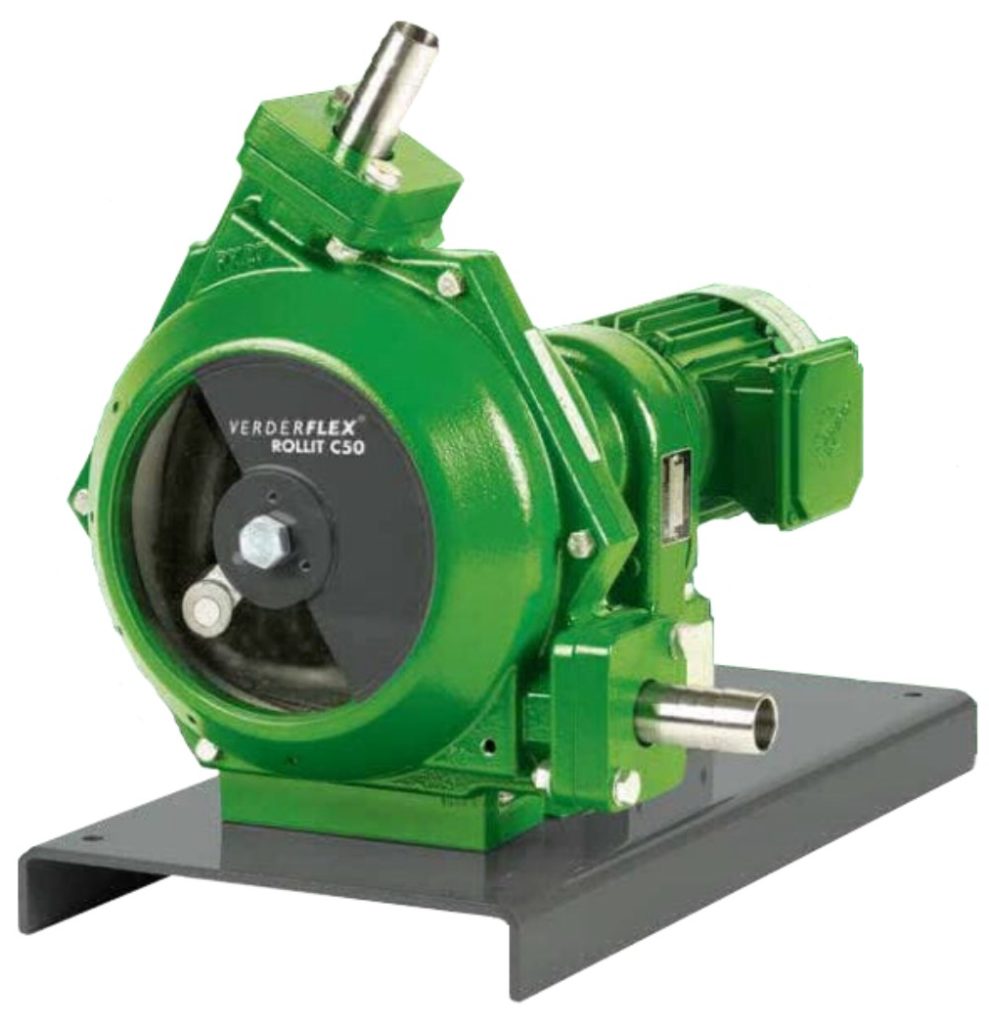
Specifications:
| Name | Index |
|---|---|
| Manufacturer country | England |
| Performance | 24.5 m3/hour |
| Pressure | 4.00 bar |
| Fluid temperature | 0-40 °C |
| Self-priming | Yes |
| Abrasive | Yes |
| Max RPM | 100 rpm |
| Cylinder volume | 0.03 l |
| Price, rubles | 93000 |
- Possibility of periodic operation "dry";
- High pressure requirements at medium flow rates;
- Explosion-proof execution of the case.
- High price.
1st place: Verderflex VF40
This model has an extremely wide range of applications and is adapted for use in almost any industry - from food to chemical. Works great with large foreign inclusions, crystallization products, highly viscous media. The special flow direction design makes the hoses more wear resistant.
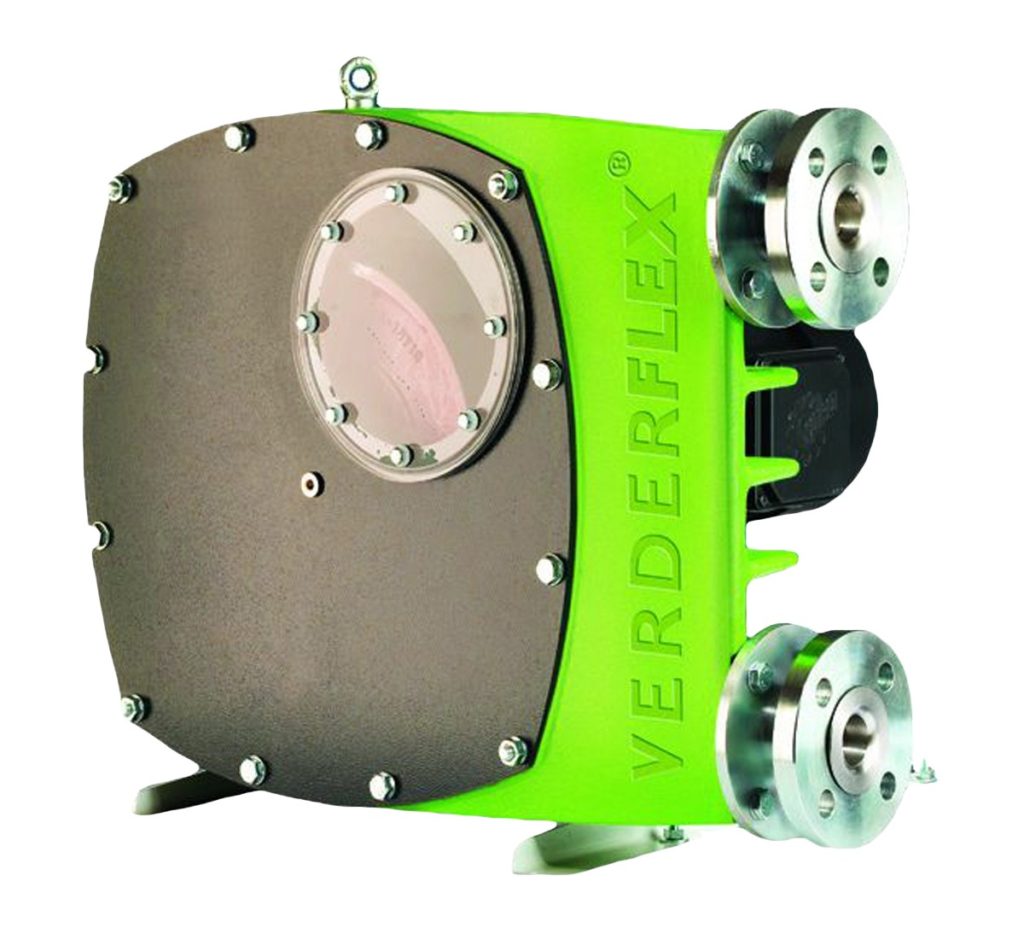
Specifications:
| Name | Index |
|---|---|
| Manufacturer country | England |
| Hose diameter | 10-125mm |
| Operating temperature, degrees Celsius | -20 to +100 |
| The size of foreign inclusions, in % of the diameter of the hose | 25 |
| Chemical resistance to aggressive environments | Yes |
| Productivity, m3/hour | 90 |
| Max head | 150 |
| Price, rubles | 120000 |
- The hose is lubricated from the outside (complete dry running is possible);
- Wide range of applications;
- High performance.
- For complex technical equipment, the minimum warranty is only 1 year.
Screw pumps
3rd place: Ampika OVN 8-4.0/5
This screw pump is a medium capacity model for pumping high viscosity substances in the food and pharmaceutical industries. The relatively slow rotation of the screw ensures that the structure of the pumped substance is preserved. The model uses a monoblock design, due to which increased stability is achieved.
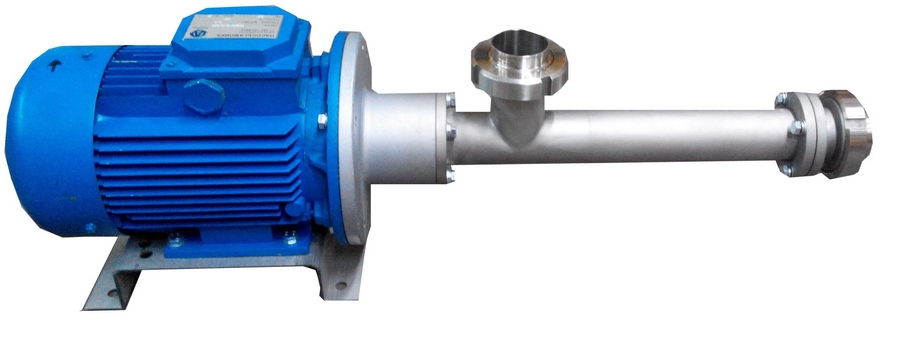
Specifications:
| Name | Index |
|---|---|
| Producing country | Russia |
| Supply, m3/hour | 4 |
| Pressure, atm | 5 |
| Dimensions | 1030x280x280 |
| Weight, kg | 45 |
| Power, kW / rev. Min. | 1.5x1000 |
| Price, rubles | 71000 |
- Improved case;
- Democratic price;
- Relatively small dimensions.
- Small range of applications.
2nd place: NETZSCH-type-NM045
This model of the increased power is intended for drainage and water treatment works. It interacts well with foreign inclusions. Can be upgraded by changing the shaft with a large number of steps. In the course of work, the principle of enhanced liquid transfer is applied due to the creation of areas of high pressure.

Specifications:
| Name | Index |
|---|---|
| Producing country | China |
| Supply, m3/hour | 60 |
| Pressure, atm | 4 |
| Dimensions, cm | 170x30x40 |
| Weight, kg | 55 |
| Power, kW / rev. Min. | 3.4x1000 |
| Price, rubles | 120000 |
- Good suction power
- Ability to hold sufficient pressure;
- Relatively small weight for a monoblock.
- There may be problems with spare parts and warranty repairs.
1st place: RSP HWG120
This pump is designed exclusively for work in the construction industry, because its main purpose is the pumping of bitumen and liquid petroleum asphalt. Works great with highly viscous substances, especially if they have an elevated temperature (up to +400 Celsius). The housing is made in a special design that prevents the leakage of harmful fumes from pumped liquids into the external environment.
Specifications:
| Name | Index |
|---|---|
| Producing country | China |
| Supply, m3/hour | 52 |
| Pressure, atm | 4.3 |
| Dimensions, cm | 170x30x40 |
| Weight, kg | 75 |
| Power, kW / rev. Min. | 4.4x1000 |
| Price, rubles | 1000000 |
- Ability to work with extremely aggressive substances;
- There is a body protection;
- The temperature regime practically does not play a role.
- The device belongs to the professional category, so the price is absolutely not cheap.
Gear pumps
3rd place: Varisco G-38
This gear unit works on the principle of internal gearing (letter G in the name). Designed for pumping substances of high viscosity, but without aggressive inclusions. It is used for distillation of oil, oil, fuel oil, various types of fuel. It has a good mechanical seal, which allows to increase wear resistance.
Specifications:
| Name | Index |
|---|---|
| Producing country | Italy |
| Productivity, m3/hour | 3.6 |
| Head, bar | 15 |
| Branch pipes size, dm | 1 |
| Maximum viscosity, cps | 80000 |
| Rotation frequency, rpm | 1500 |
| Drive power, kW | 2.3 |
| Price, rubles | 38000 |
- The most adequate price / quality ratio in its segment;
- Improved internal structural elements;
- Fire resistant body protection.
- Does not work with aggressive/abrasive media.
2nd place: Liverani Gear 50
This pump works on the principle of external gearing. It is excellent for installation on long-distance ships both in the engine room (for hauling fuel oil) and as additional power equipment for ship hydraulic installations. The model is distinguished by an extremely budget price, which is not typical for the existing functionality.

Specifications:
| Name | Index |
|---|---|
| Manufacturer country | Italy |
| Productivity, m3/hour | 3 |
| Head, bar | 10 |
| Branch pipes size, dm | 3.4 |
| Rotation speed, rpm | 300 |
| Maximum viscosity, cps | 20000 |
| Drive power, kW | 1.5 |
| Price, rubles | 40000 |
- Wide functionality;
- Budget price;
- Monoblock construction.
- Does not work with high viscosity substances.
1st place: Bosch Rexroth PGH-2X-020/r11VU2
This model is intended exclusively for strengthening the hydraulic units of building mechanisms (excavators, tractors, etc.). Due to its use, the productivity of equipment is significantly increased. Used for pumping oil, damping fluids, etc.
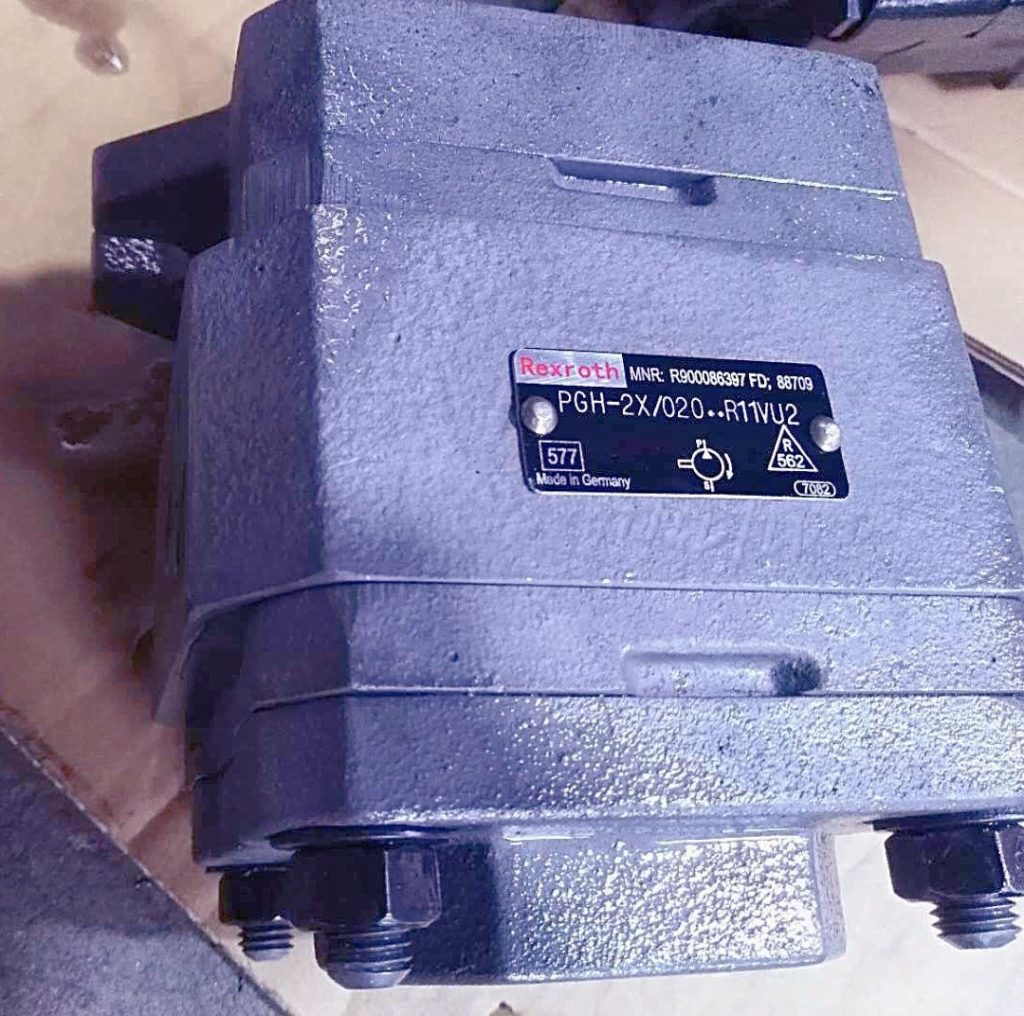
Specifications:
| Name | Index |
|---|---|
| Manufacturer country | Germany |
| Weight, kg | 20 |
| Dimensions, cm | 35x30x30 |
| Pressure, bar | 350 |
| Maximum pumping volume, m3/hour | 250.5 |
| Price, rubles | 78000 |
- Increased power;
- Compact design;
- Relatively inexpensive price for an industrial pump.
- Highly specialized and limited scope.
Instead of an epilogue
Before purchasing an industrial pump in Russia, you should enlist the opinion of a specialist who can correctly select the right model. The peculiarities of the market for this industrial equipment in the Russian Federation are such that no one will ever post the real price of a new unit on the official website of a Russian dealer - the seller will always first ask you to fill out an online application, where you will need to clarify some technical issues for future use. Therefore, it is possible to estimate the cost of pumps approximately only by viewing private ads, where they are sold in a used condition. Accordingly, it is not a fact that it will be possible to find the desired model in used lists, and even if so, the price of a new one may differ several times. Thus, for price issues, it is better to use the information of foreign manufacturing plants from their official websites. In addition, it is advisable to immediately discuss the issue of warranty repairs with the seller - especially such a topic must be raised without fail when buying screw pumps.
new entries
Categories
Useful
Popular Articles
-

Top ranking of the best and cheapest scooters up to 50cc in 2022
Views: 131649 -

Rating of the best soundproofing materials for an apartment in 2022
Views: 127688 -

Rating of cheap analogues of expensive medicines for flu and colds for 2022
Views: 124517 -

The best men's sneakers in 2022
Views: 124031 -

The Best Complex Vitamins in 2022
Views: 121938 -

Top ranking of the best smartwatches 2022 - price-quality ratio
Views: 114978 -

The best paint for gray hair - top rating 2022
Views: 113393 -

Ranking of the best wood paints for interior work in 2022
Views: 110318 -

Rating of the best spinning reels in 2022
Views: 105327 -

Ranking of the best sex dolls for men for 2022
Views: 104363 -

Ranking of the best action cameras from China in 2022
Views: 102214 -

The most effective calcium preparations for adults and children in 2022
Views: 102010



